ESCAPE
Tented Safari in the Sneeuberg — the marvels of Plains Camp at Samara Karoo Reserve
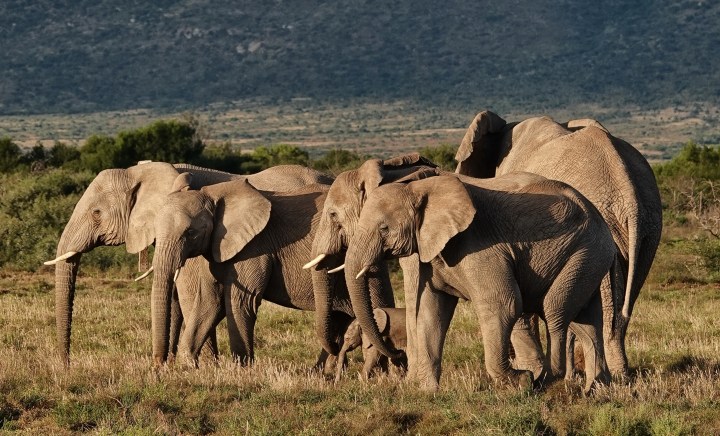
At the end of the Aberdeen Flats in the Eastern Cape, lie the legendary Plains of Camdeboo. They yield abruptly to the Sneeuberg peaks rising above the Karoo, like ironstone ramparts, just north of Pearston.
In summer, this is a high-altitude green island that traps rain clouds. In winter, as the name hints, snows lie heavy as marzipan on the tallest mountaintops.
This is the view from your explorer’s tent in an open game area of Samara Karoo Reserve, a newly opened tourism offering simply called Plains Camp. The arrayed peaks of Honey Mountain, Kondoa, Spitskop and Blakesridge light up pink in the late afternoon. Then it’s dinner under the evening star, the enormous expanse of the Milky Way, and the Southern Cross wheeling slowly above.
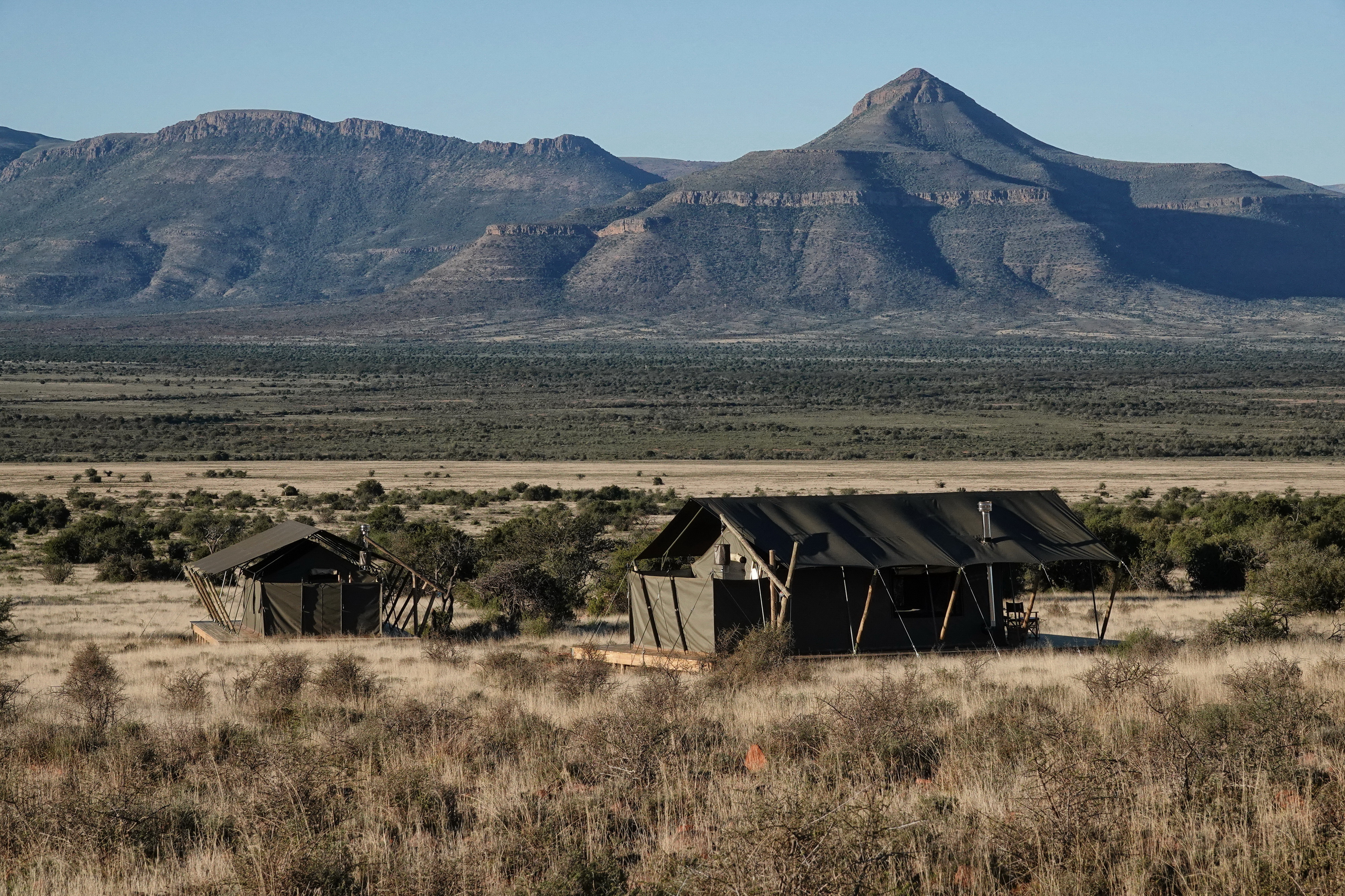
Part of the tented Plains Camp, with the Sneeuberg mountains rising in the distance. (Photo: Chris Marais)
Sleeping under canvas in an unfenced part of a game reserve always brings you close to nature. In the night, you hear jackals yipping alarm calls at the cheetah. A lion — or male ostrich — grunts in the distance. A fiery-necked nightjar chants “Good lord deliver us”.
The blue cranes sing in the dawn.
Naledi’s babies
After sunrise, there is coffee and rusks and news of the first sightings. The jackals were right. There are cheetahs nearby. We don hats, binoculars and sunblock. Jan Dunn of Samara’s anti-poaching takes the lead, along with guides Roelof Wiesner and Rowin Benade.
We walk quietly through the blonde grasses and bright green vygies, past Karoo shepherd trees, through fragrant heathery anker Karoo and tiny white flowers. Naledi the cheetah is on the hunt, walking down a long slope from the tree where she had been sunning herself. Her four near-adult cubs perk up and pay attention.
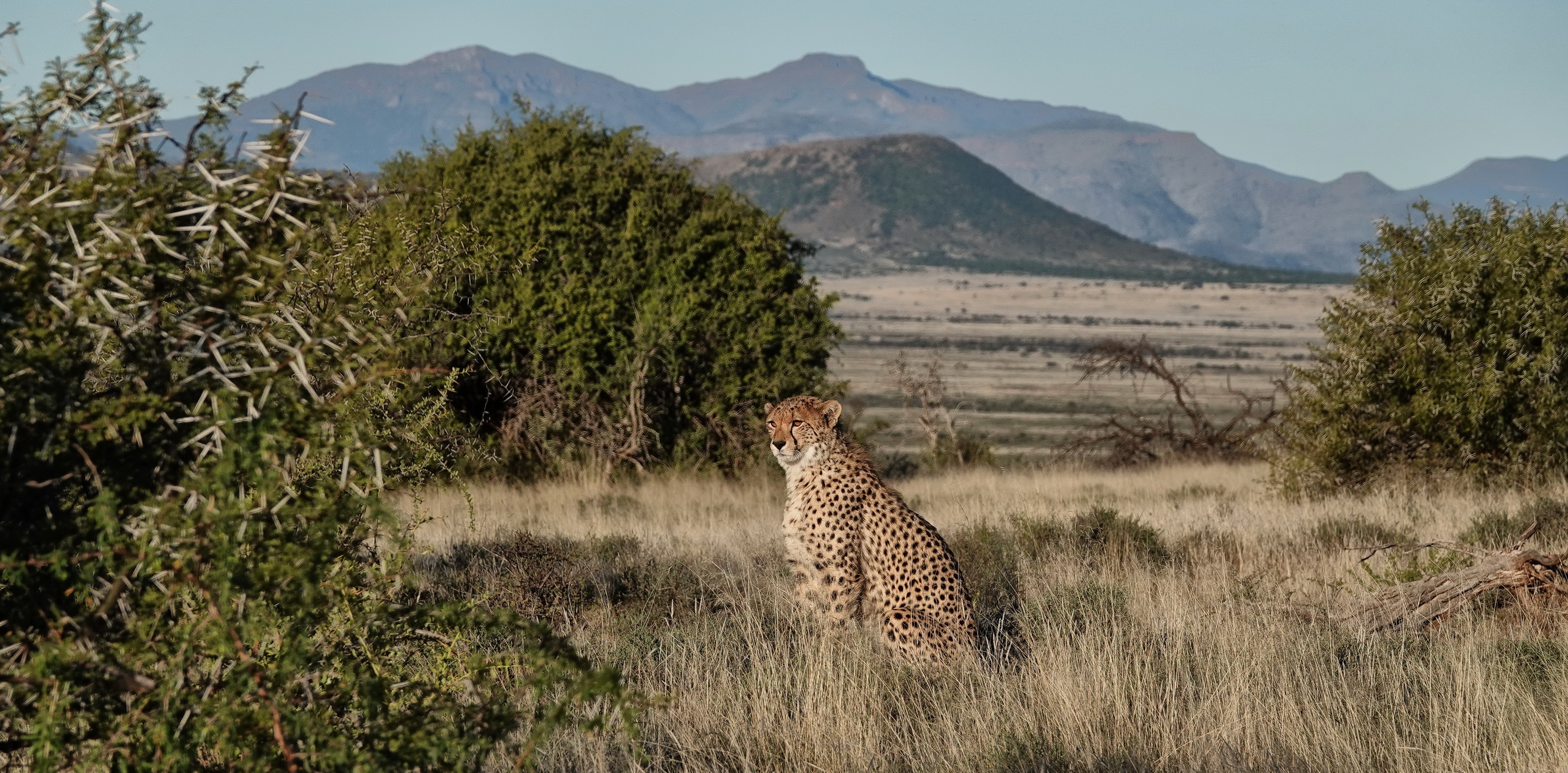
Naledi and her cubs are completely habituated to humans, either on foot or in vehicles. (Photo: Chris Marais)
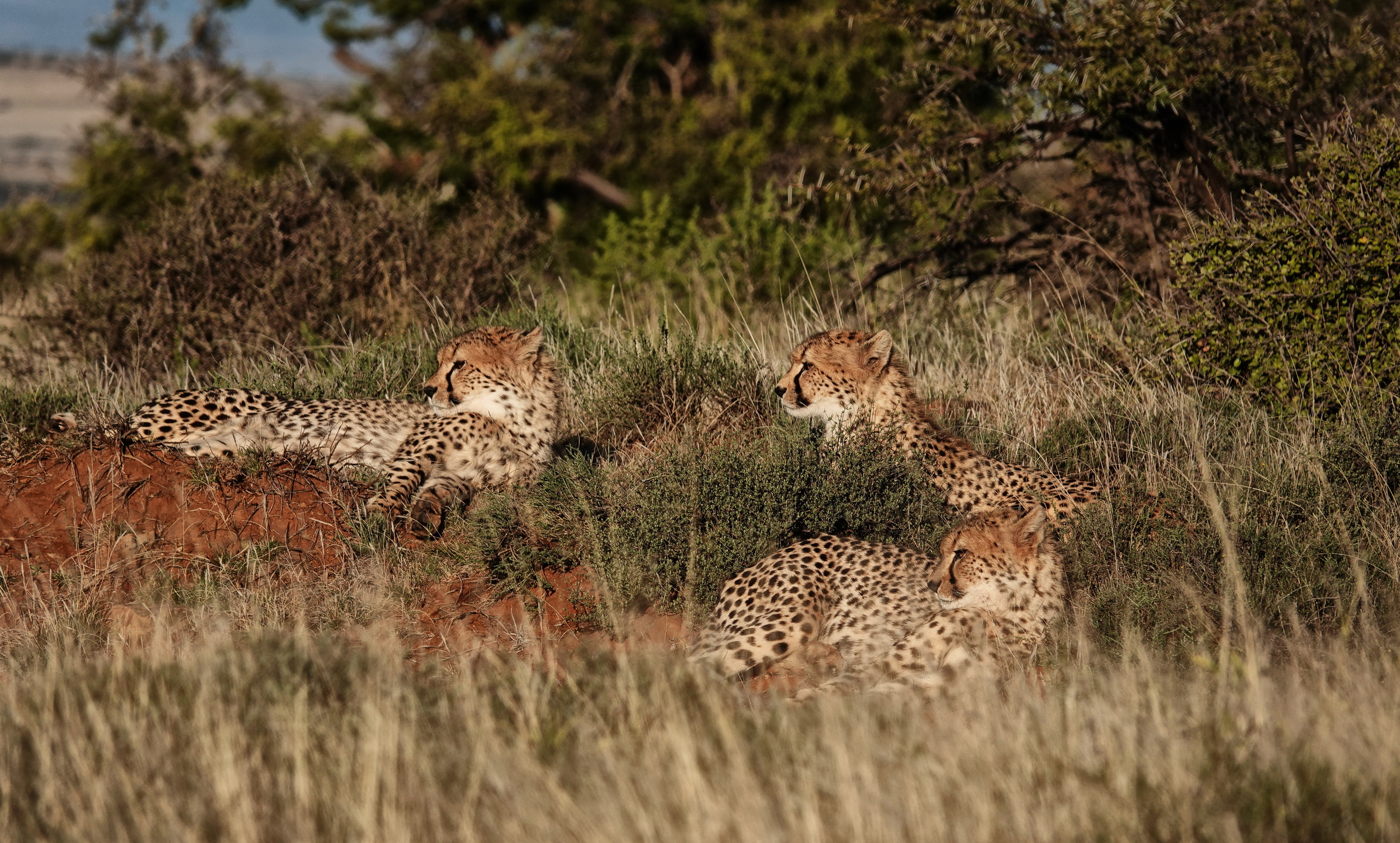
Three of Naledi’s cubs watching their mom hunt in the distance.(Photo: Chris Marais)
If their mother (and stepmom to two of them) catches something today, she will probably just stun it and then hand it over to them to finish off. It’s time they learnt the art of a quick kill.
We approach quietly, in single file, keeping out of their way.
The cheetahs absolutely ignore us. They are habituated to humans. We might just as have been Shepherd’s Trees for all the attention they give us. Their entire attention is on what their mother is doing. One by one they rise and make their way down in her direction. One has a stumpy tail — a genetic defect passed down from his parents.
Naledi is now more than 700 metres away. The springbok ram she was stalking wheels around and sees her. Game over. All five cheetahs sit down and thoughtfully consider the scene. No kill, not this time. Maybe next time. Or the next.
Samara Karoo Reserve has been created out of 27,000 hectares of former farmland. Along with giraffes and members of the Big Five, all the iconic creatures of the arid zone are here: cheetah, springbok, black wildebeest, eland, oryx, bat-eared foxes, red hartebeest, blesbok, meerkats, ground squirrels, blue cranes, ostriches, pale chanting goshawks, Karoo korhaans and Kori bustards.
But it is cheetahs that have always been part of Samara’s special magic. Back in 2004, a female called Sibella, plus two males, were released on the reserve. They were the first cheetahs to be returned to the Karoo in 130 years.
Sibella was, by any measure, a remarkable cat. She was born in the North West province but had been attacked by hunting dogs, the flesh torn away from her hind legs. She was thrown into a cage and cruelly beaten, a rope forced into her mouth. She was rescued by De Wildt Cheetah and Wildlife Trust, and underwent a five-hour operation to repair her many injuries.
Once released on Samara, Sibella thrived. Before dying of natural causes in 2015, at the grand old age of 14, she raised a total of 19 cubs (2.4% of South Africa’s wild cheetah population).
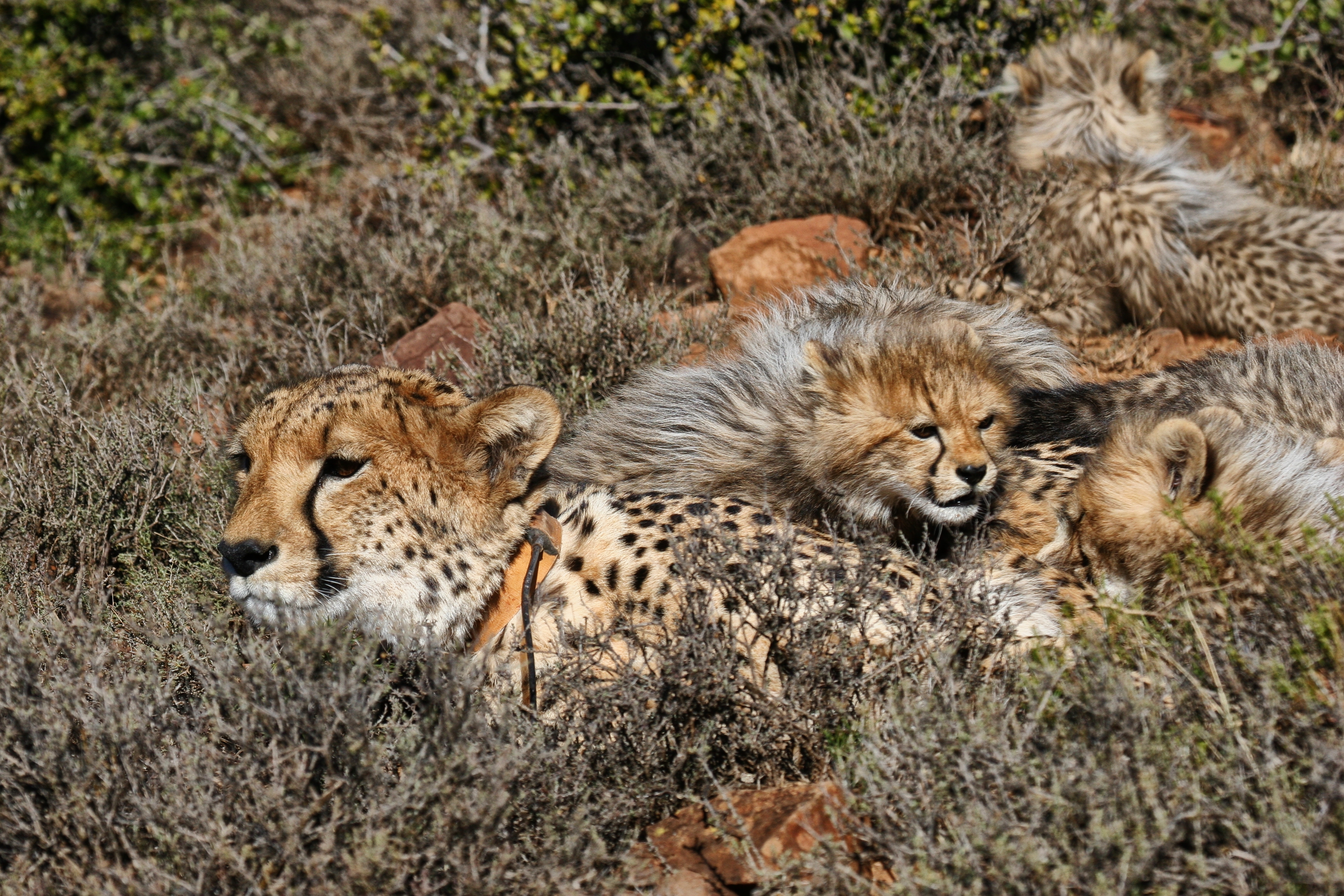
Sibella, introduced in 2004, was mother to 19 cheetah cubs. (Photo: Chris Marais)
While we were there, Samara opened the boma gates to another cheetah, named Mbali (Flower in Zulu) by Adrian and Tina Thorne of Winchester in the UK, regular visitors to Samara since 2007.
“There’s just something about Samara and the Karoo that just stays with you. We feel part of the process, and the way the reserve has grown.”
Young Mbali, translocated from Mabula Game Reserve in the Waterberg, and distantly related to Sibella, ventured out nervously when the gate was opened. Reserve manager Ryno Erasmus had placed a fresh springbok ram about 20 metres outside the boma where she had spent six weeks becoming accustomed to her new surroundings.
Head low, shoulders rolling, she lay down to watch us warily from the deep shadows of a jacketplum tree. She is the tenth cheetah on the reserve.
Blue cranes
Apart from Karoo shepherd trees and cheetahs, Samara’s other icon seems to be the blue cranes. There must be hundreds of them, it seems, all gathering in elegant groups and dancing. They flap, leap, bow and then busy themselves looking for roots, seeds, reptiles and insects before another bout of ballet.
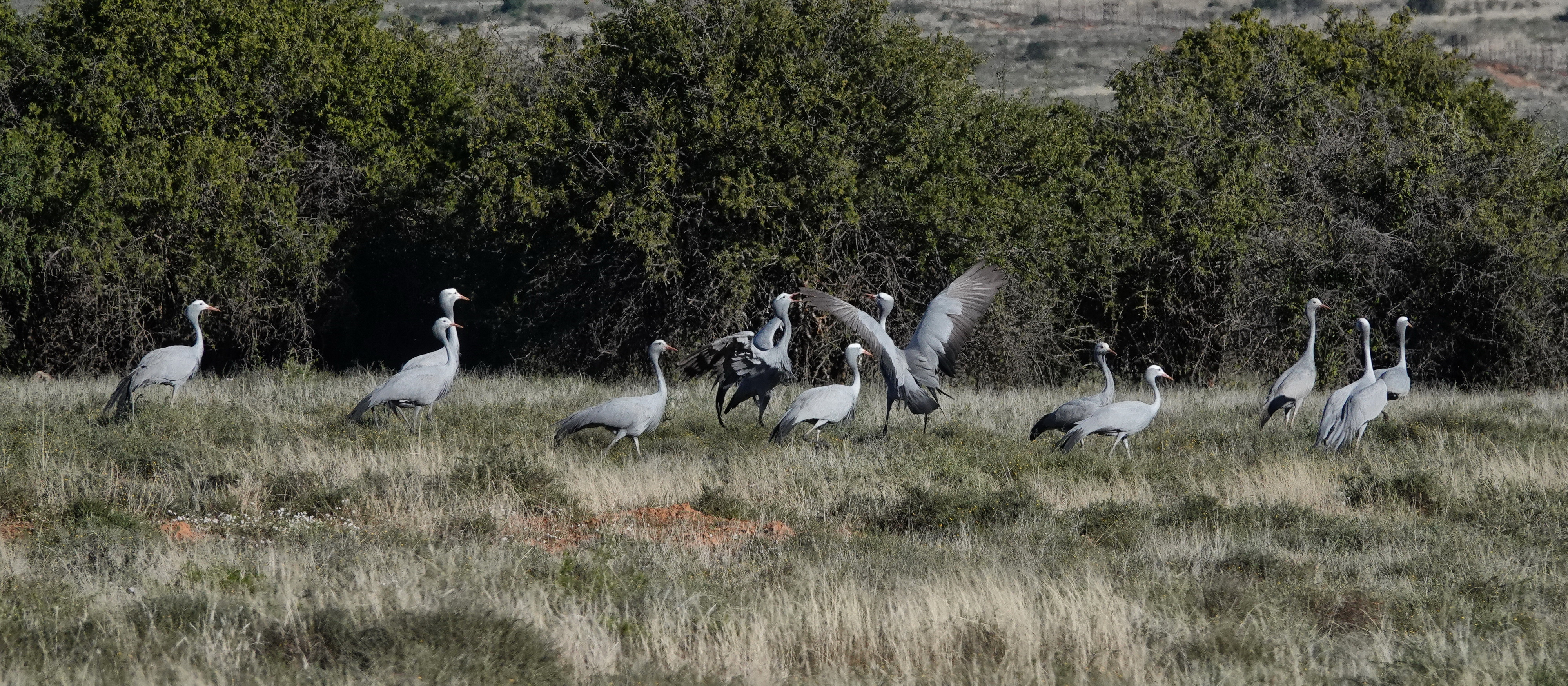
Gathered in small groups, the blue cranes were starting to dance. (Photo: Chris Marais)
On one of our night drives (after a sighting of an aardwolf foraging for termites, a dozen jumping springhares and a handful of scrub hares and jackals) we hear the unmistakable sound of blue cranes in the dark. Good guides like Roelof and Rowin do not dazzle diurnal animals with a spotlight at night. But in the flickers of light, we saw that dozens of ghostly blue cranes were standing in open water, for all the world like woodsmoke-coloured flamingos.
Eve Palmer devoted most of a chapter to them in her famous book, The Plains of Camdeboo (first edition 1966, reprinted many times). Her family’s farm, Cranemere, is less than 50km from Samara’s Plains Camp. It was named for a large body of water there, doted upon by the blue cranes. She recorded their nocturnal habits.
“The birds sleep knee-deep in the water, standing upon one leg. They must have considerable stamina for the water sometimes freezes around them.”
The Sneeuberg range
Samara is part of the Mountain Zebra Camdeboo Protected Environment, an ambitious project sprawling between two national parks, involving 200 landowners and 840,000 hectares. It was initiated in 2012 and helps to protect the Sneeuberg Centre of Endemism. The high massifs here protect plants found nowhere else.
Four major biomes intersect in these mountainscapes — Nama Karoo, grasslands, savannah and thicket. Cool moist mountains in arid areas are often rich in endemics, and the Sneeuberg range is no exception.
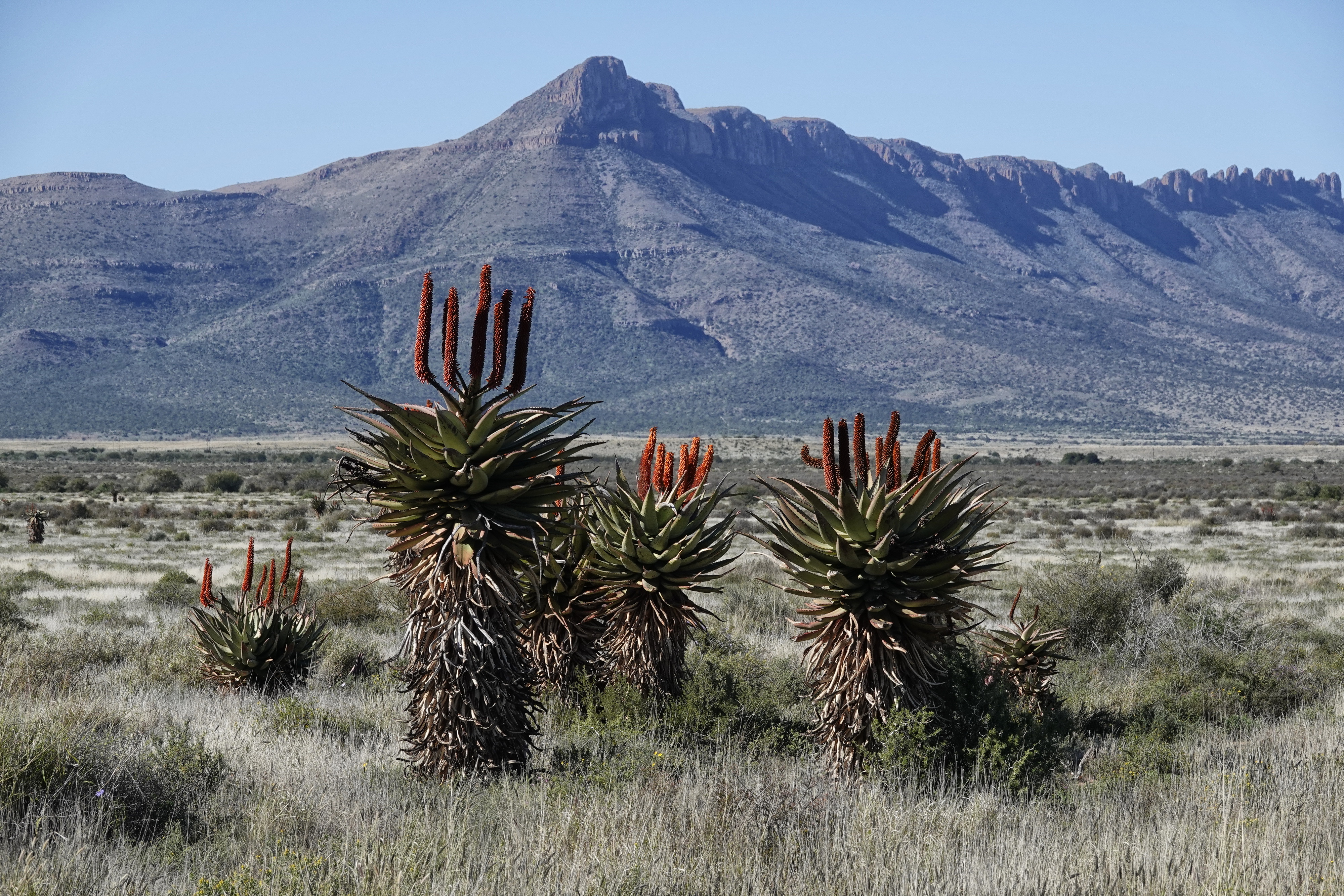
Always within sight of Samara’s western views is the picturesque and jagged Tandjiesberg (Mountain of Teeth), adorned with flowering Aloe ferox in winter. (Photo: Chris Marais)
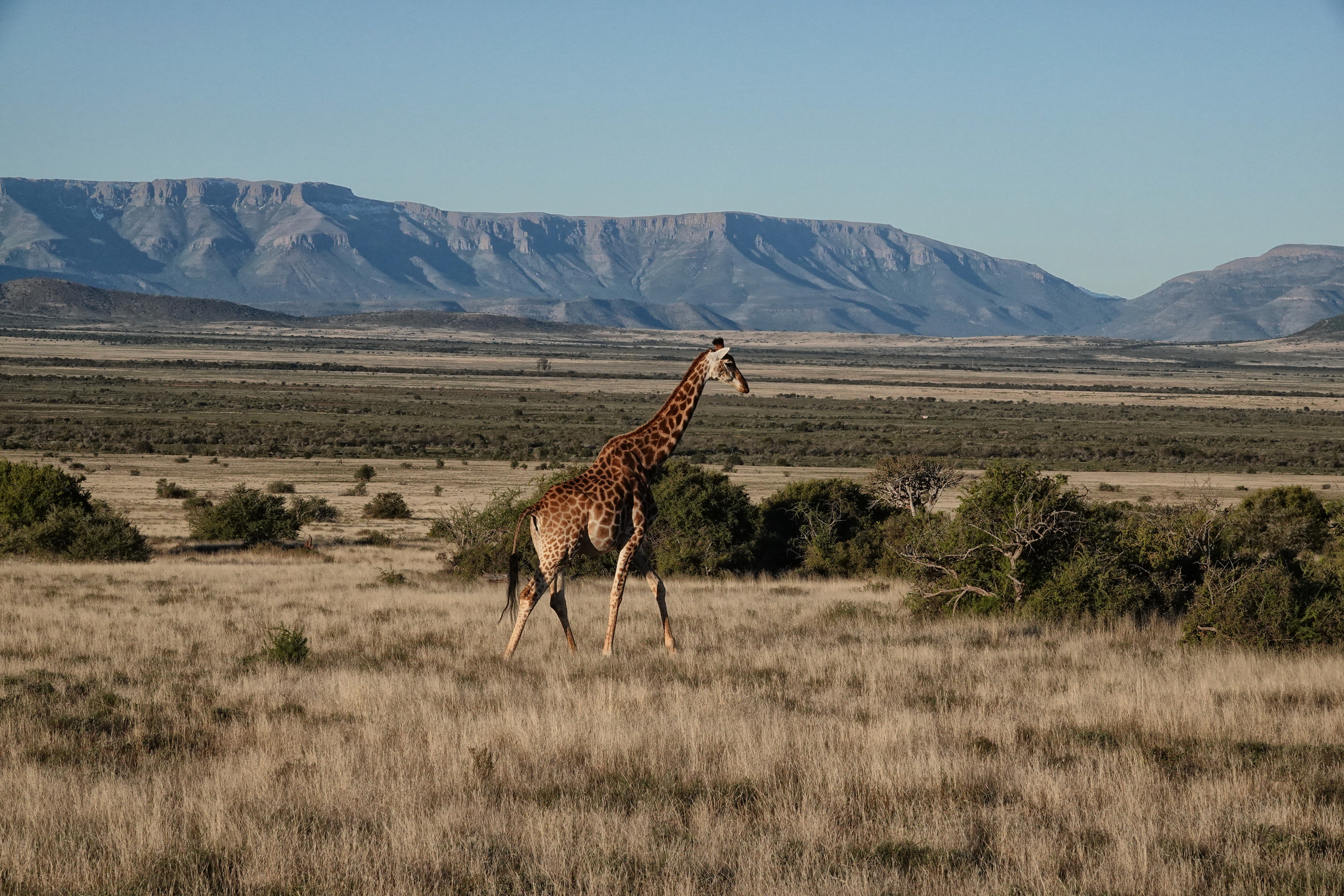
One morning, a curious giraffe came to visit. (Photo: Chris Marais)
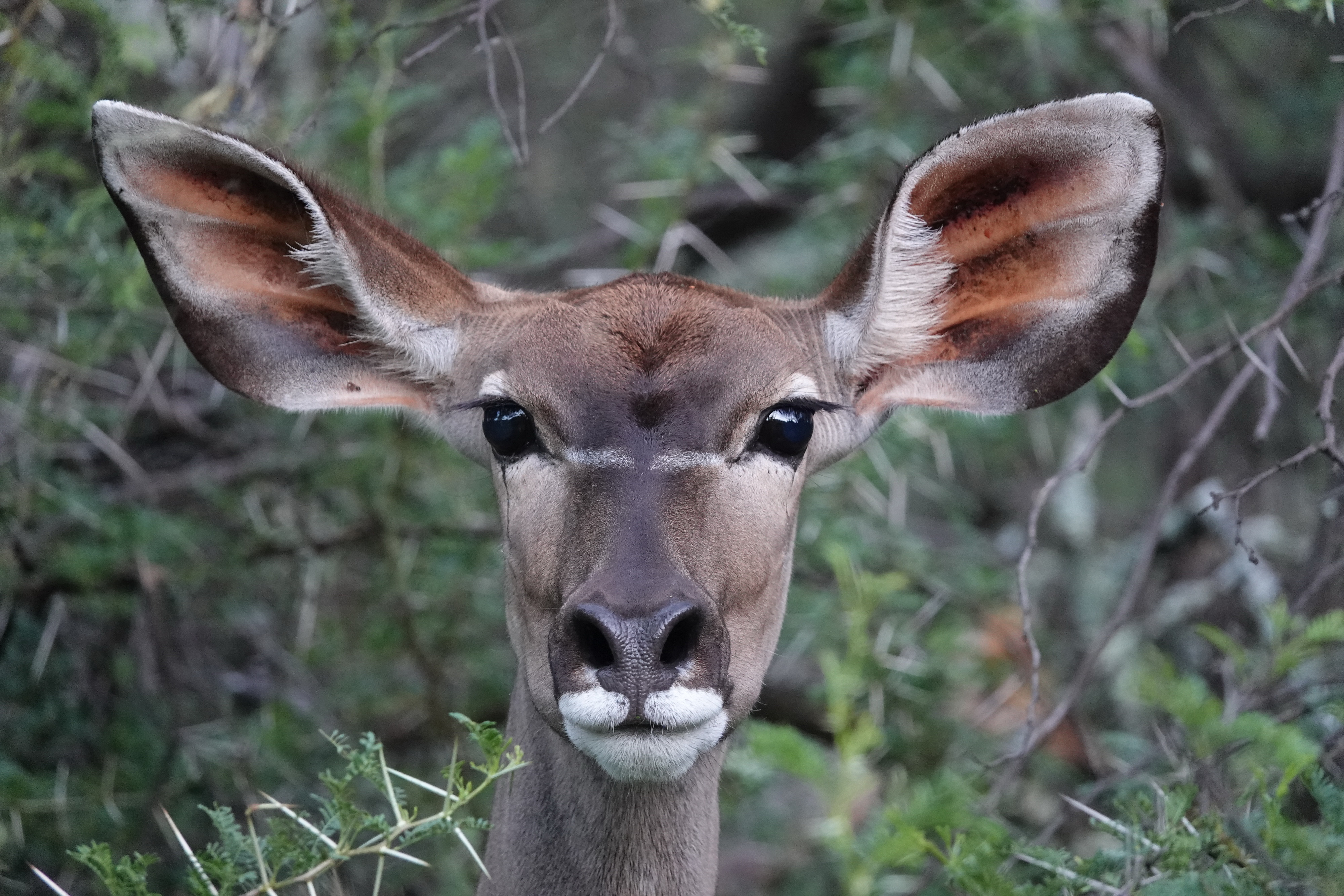
The beauty of a young kudu cow. (Photo: Chris Marais)
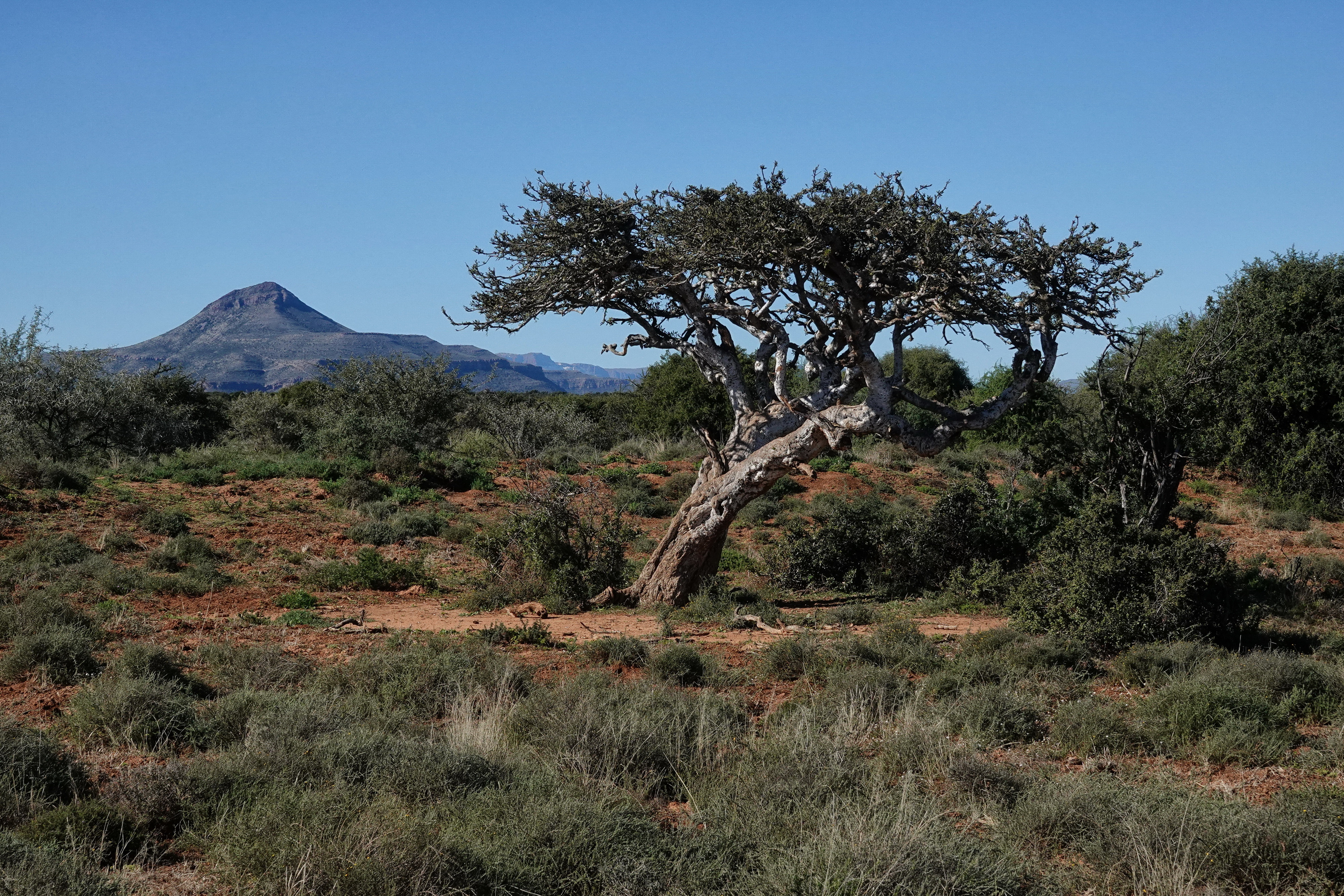
One of the iconic trees on Samara is the Karoo Shepherd Tree (Boscia oleoides). Many of them are centuries old. They have deep roots and touch leaves kept pruned by giraffes and kudus. (Photo: Chris Marais)
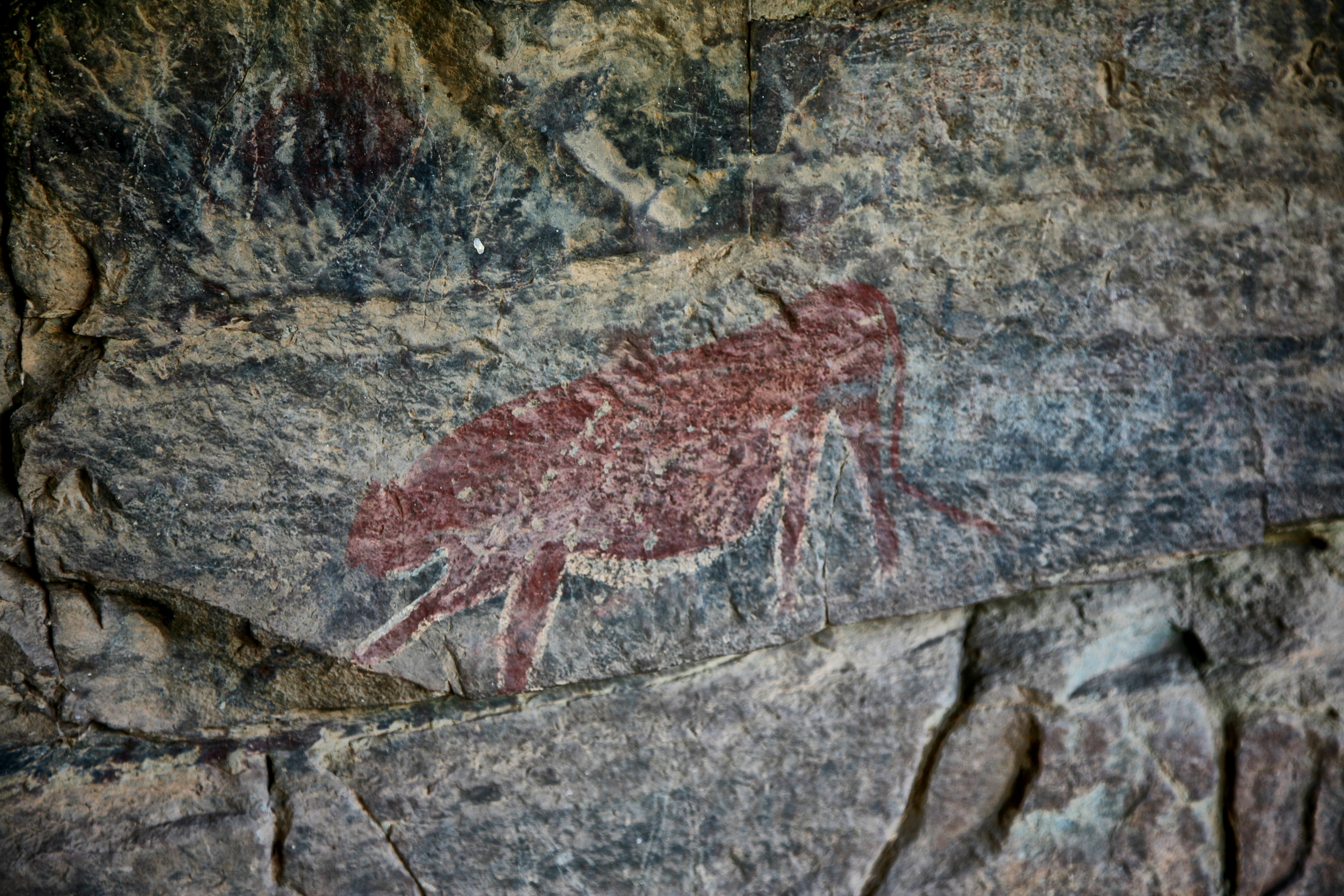
In an overhang high above the Samara Plains is a Bushman painting of what resembles a pregnant or well-fed cheetah. (Photo: Chris Marais)
In 2009, three botanists from Rhodes and Stellenbosch Universities (Victor Ralph Clark, Nigel Barker and Ladislav Mucina) wrote an article for the South African Journal of Botany, recognising this region as a new centre of endemism for its many unique plants.
There are other remarkable species, including a tiny but fierce adder and a delightfully named butterfly, the Compassberg Skolly. This is also where the Cape Mountain Zebra (Equus zebra zebra) was saved from extinction after the declaration of the Mountain Zebra National Park in 1937 — due in no small part to the Michau and Lombard families.
Cape vultures are occasionally spotted in these mountains, but abandoned historical roosts in the 1970s. A few years ago, farmers approached South African National Parks (SANParks) and the Endangered Wildlife Trust (EWT) to enquire about how to bring them back. There are currently fragmented populations between the Wild Coast and Cradock.
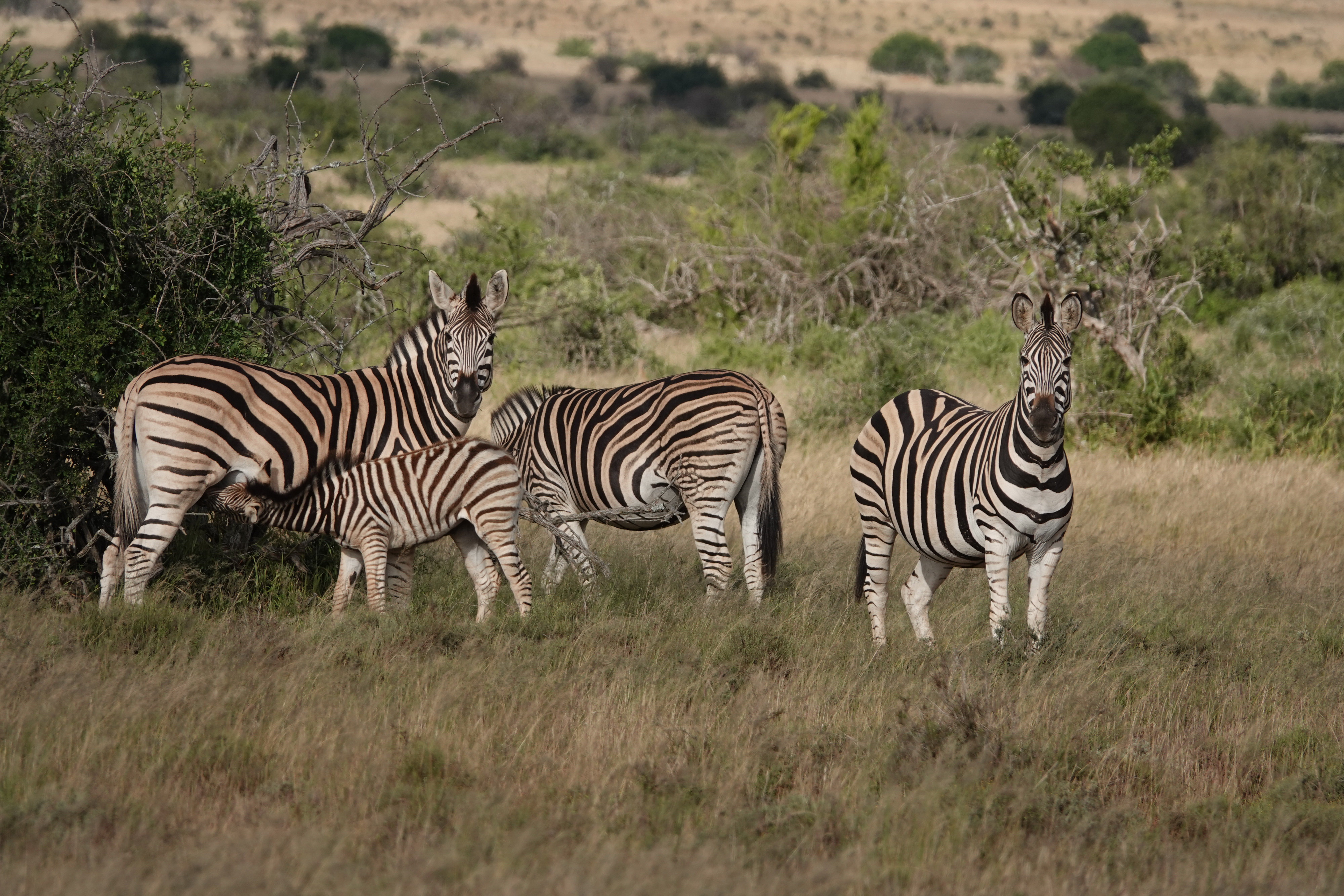
There are Burchell’s zebras on the plains and Cape mountain zebras in the highlands. (Photo: Chris Marais)
Instead of translocating individuals or trying to establish colonies artificially, they are first working to eliminate any threats (typically poisoning, electrocution or drowning in reservoirs) and ensuring a safe source of food for them in the hopes that they will naturally re-establish breeding roosts.
The goal is a Karoo Vulture Safe Zone that stretches from the Cradock district all the way to Karoo National Park outside Beaufort West, a region spanning 2.3 million hectares.
“The long-term goal is to encourage Cape vultures back to their historical ranges throughout the Karoo and ultimately recover this population by creating a safe zone that links key protected areas These birds with their enormous wingspans can soar more than 200km in a morning, so this has to be a project that works over vast areas,” according to the Endangered Wildlife Trust’s Danielle du Toit. DM
For an insider’s view on life in the Karoo, get the Three-Book Special of Karoo Roads I, Karoo Roads II and Karoo Roads III (all illustrated with black and white photographs) by Julienne du Toit and Chris Marais for only R800, including courier costs in South Africa. For more details, contact Julie at [email protected]




















Wonderful!!!
Beautifully written Julie, and lekker images Chris.